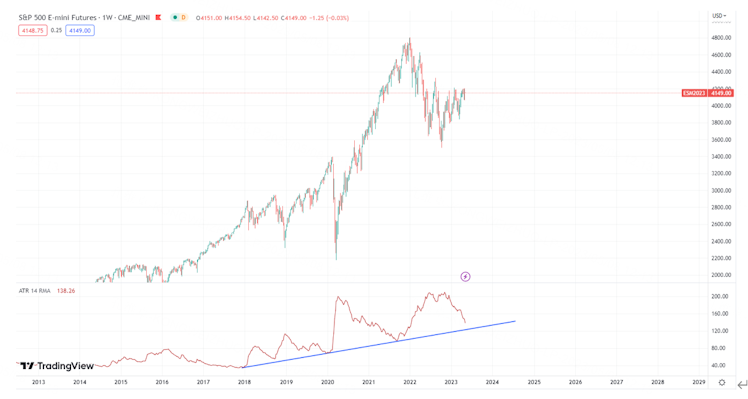Trending Assets
Top investors this month
Trending Assets
Top investors this month
May curse strikes again, here's a small trick to anticipate a big market correction
The saying "Sell in May and go/walk away" is not unfamiliar to investors. Although it does not fully correspond to the actual cyclical factors of the stock market, concerns about the traditional selling month have emerged after the highly anticipated "last hike" by the Federal Reserve. So, will the dilemma of being caught between a rock and a hard place be resolved in the near future?
First, let's take a look at the latest situation of the Federal Reserve. Currently, the probability of a rate cut in July's Fed watch is around 40%. Obviously, the market's expectations of a shift are far ahead of the official ones. As for the year-end data, the expectation of 4.25-4.50% is about 50%, while the probability of maintaining the current 5.00-5.25% is only negligible at 0.2%. Unless there are very unexpected situations in the market, it seems that a rate cut by the Federal Reserve this year is inevitable, and the only difference is in which month it will start.
Under the premise of a rate cut, there are actually only two possibilities: bad news that is significant enough to cause a large market decline, forcing the Federal Reserve to cut interest rates earlier than they expected (the dot plot indicates that the Federal Reserve may lean towards keeping interest rates unchanged this year); or a significant drop in inflation to the target level of 2.5-3.0%. Based on the latest inflation and employment data, although the general direction is still within expectations, it is almost impossible for CPI to halve from its current level again. Especially since the price of crude oil, which is closely related to inflation, is still much higher than the cost output price of shale oil. From this, we can draw an inference that risk assets (stock indices) may face significant downside pressure due to some news or events in the next 3-6 months.
The next question is whether the U.S. stock market will experience a big drop in the near future? I personally tend to believe that the first half of the year may still be a stalemate, with the following reasons. First, the economic data is stable, as discussed earlier. Even in the context of the banking crisis in early March, the US stock market index did not show a sustained decline, and the decline was limited. This indicates that the market is OK with taking over, and everyone does not think there is systemic risk.
Secondly, in terms of volatility indicators, the weekly ATR has been declining this year, but it has not returned to the volatility trend line of several previous major market fluctuations. In other words, the situation of small fluctuations can still be maintained for a period of time. On the daily ATR chart, the current index is below the midpoint level, which can go up or down. If there is really any turbulence, we can also use the ATR breaking above the March high point as a warning signal.

Finally, in terms of leading indicators such as crude oil and copper, although the prices of both have returned to the bottom of the recent range, there has not yet been a downward break. This also implies that although the US stock market has long-term concerns, there may be no imminent threat.
Of course, we do not have too high expectations for the upper limit of the US stock market. Taking the S&P as an example, the pressure zone formed by 4200-4300 has repeatedly blocked the efforts of the bulls, and the upper pressure of 4600 is even heavier. All in all, high selling and low buying will still be the mainstream option in the near future.
Already have an account?